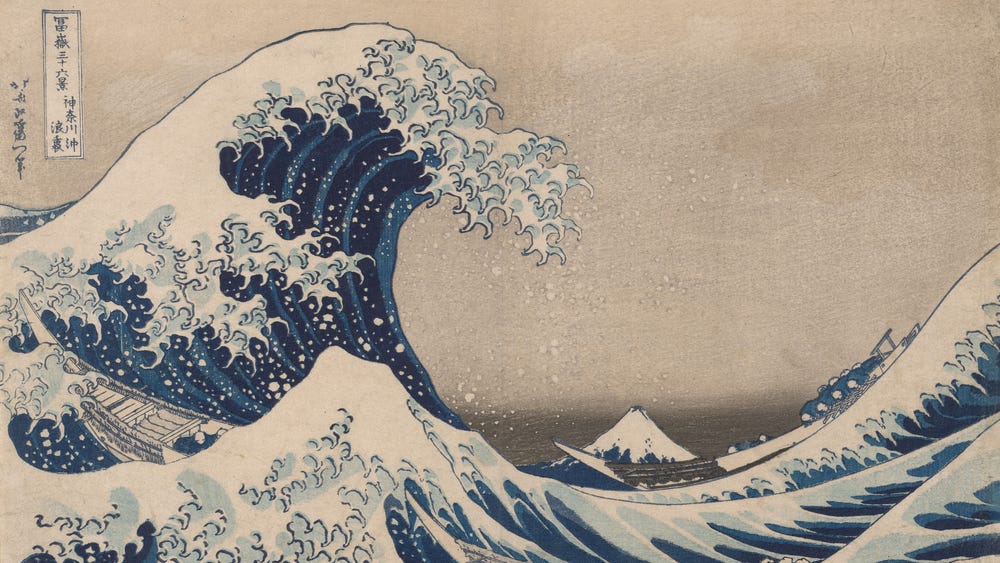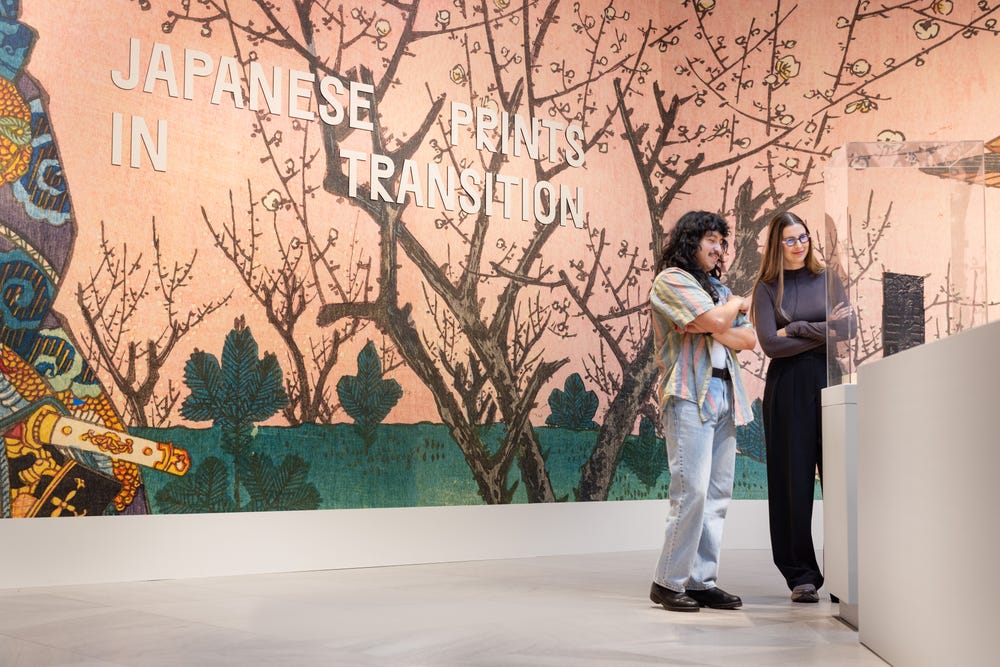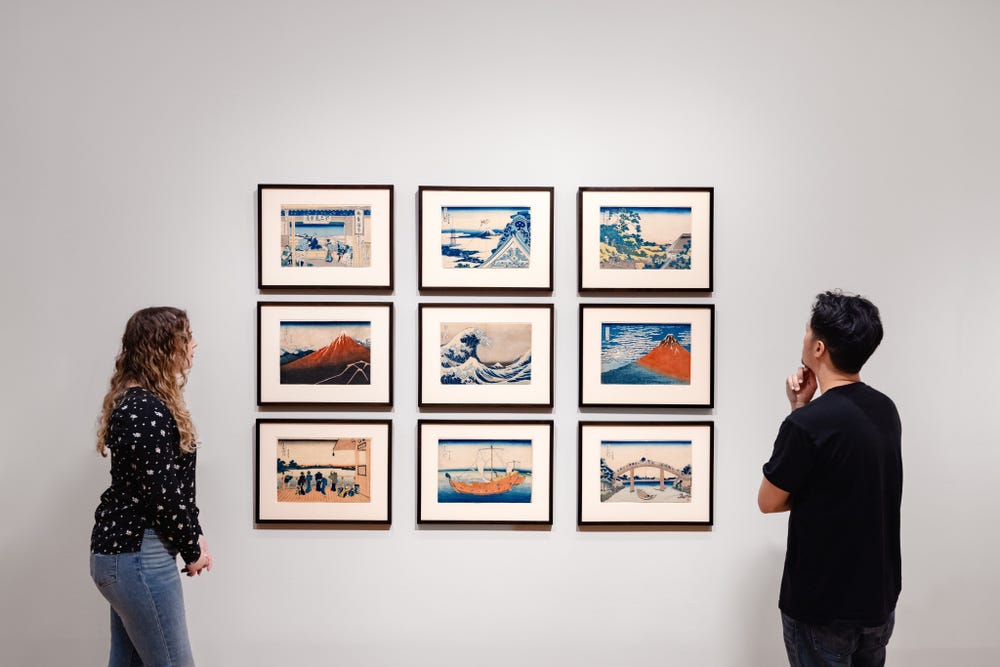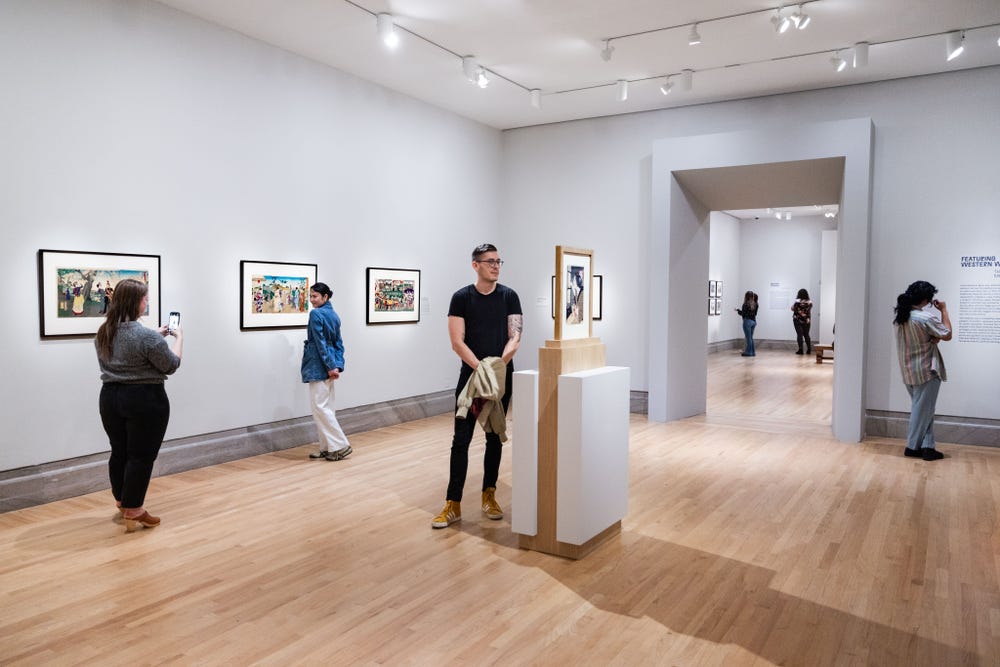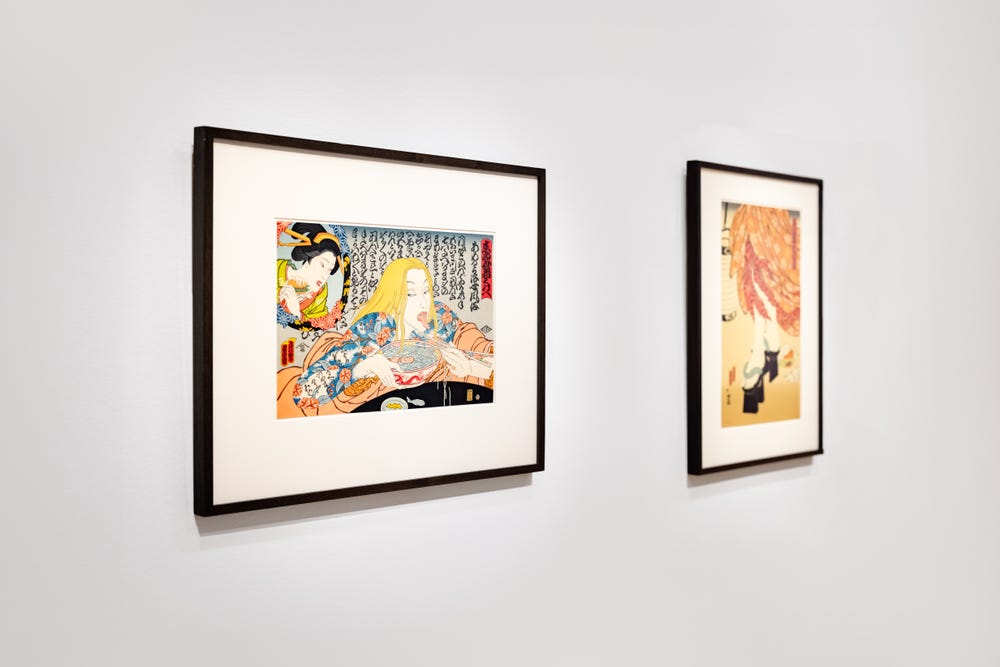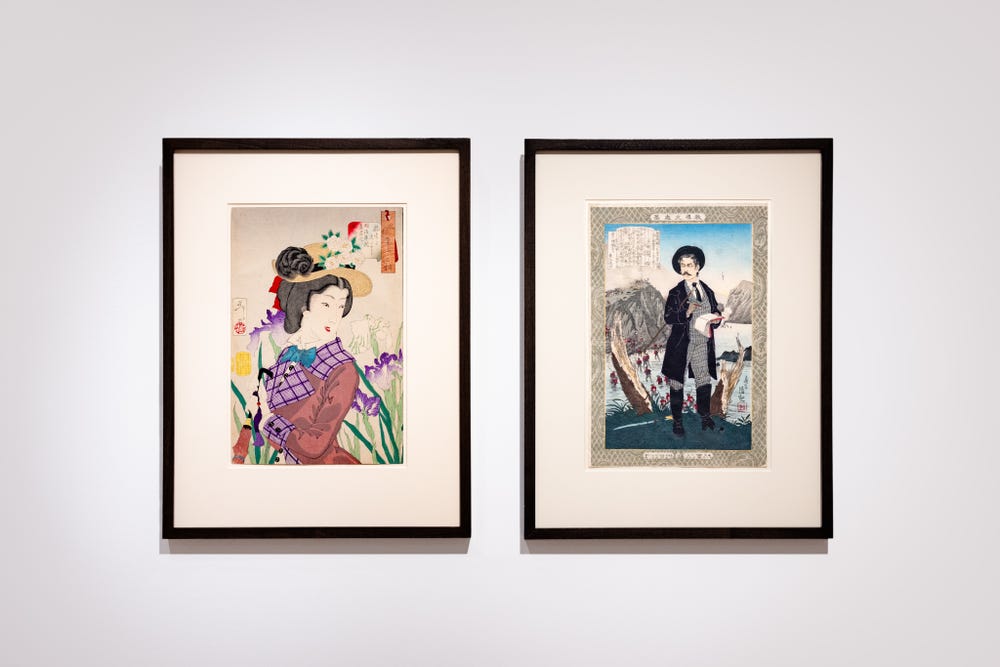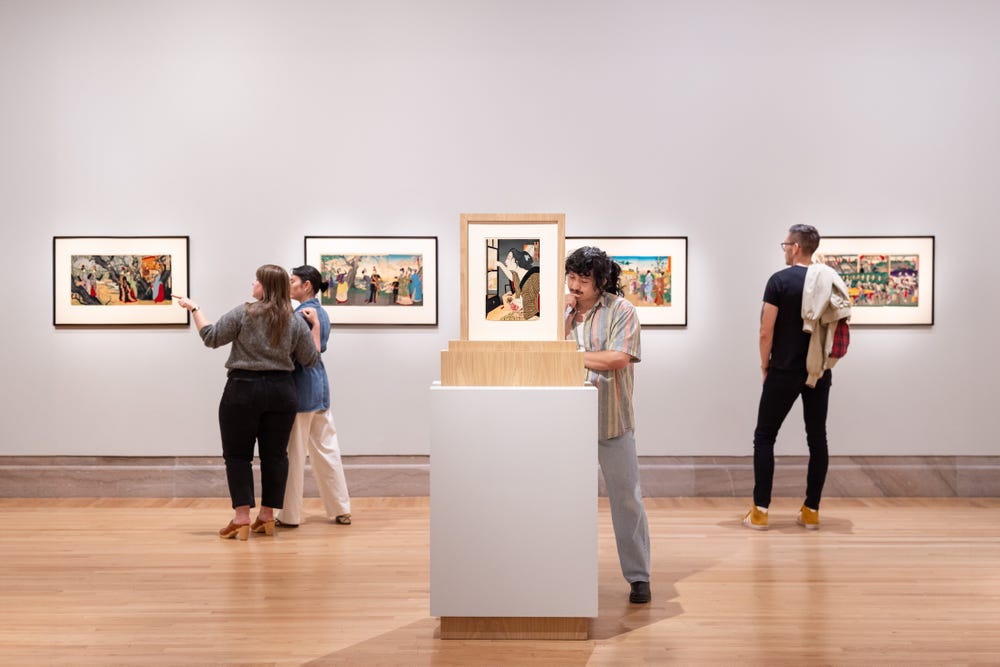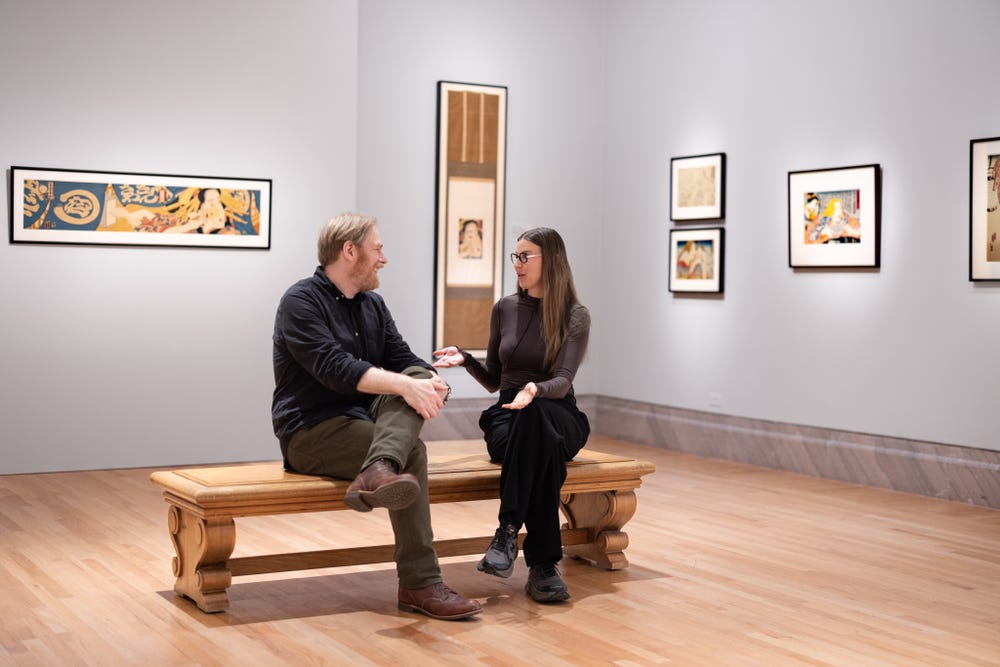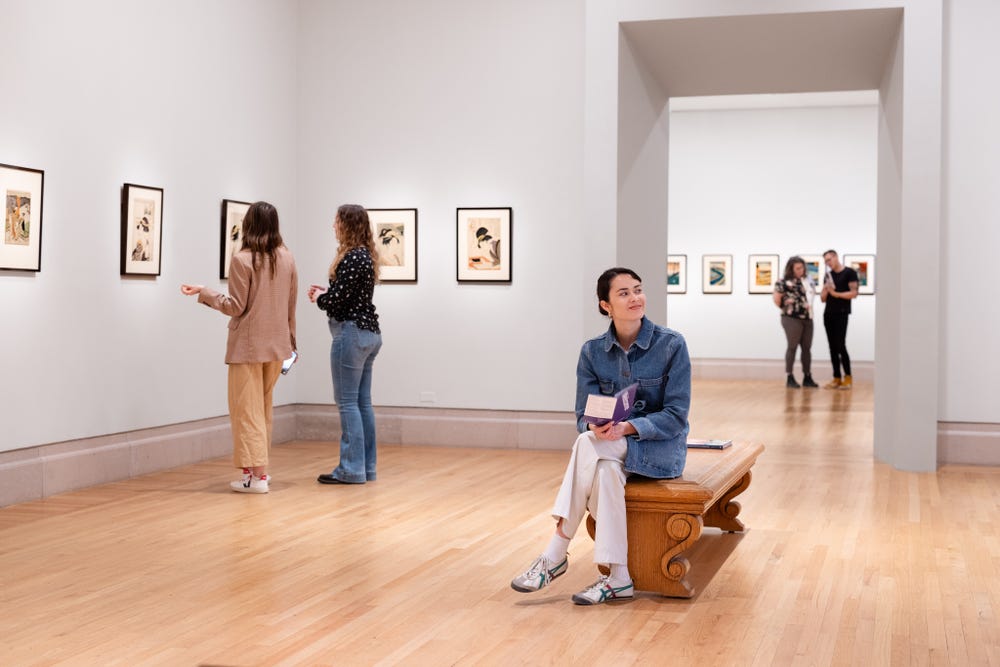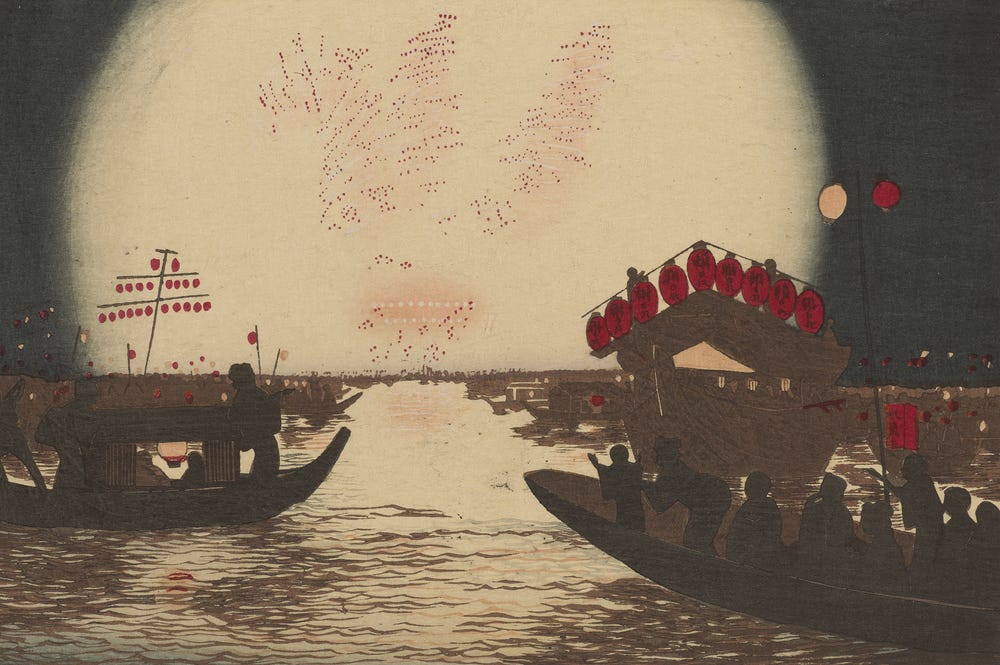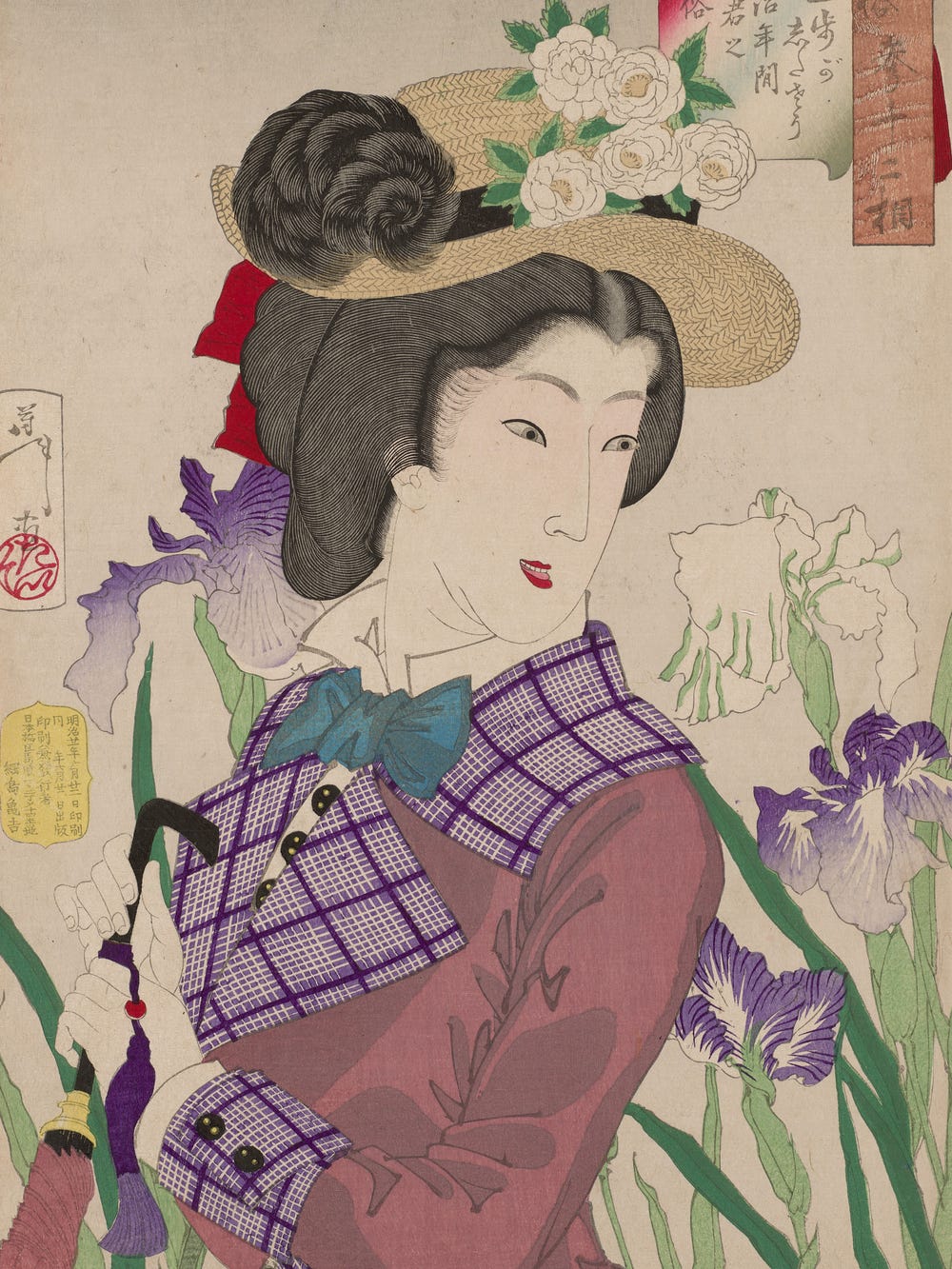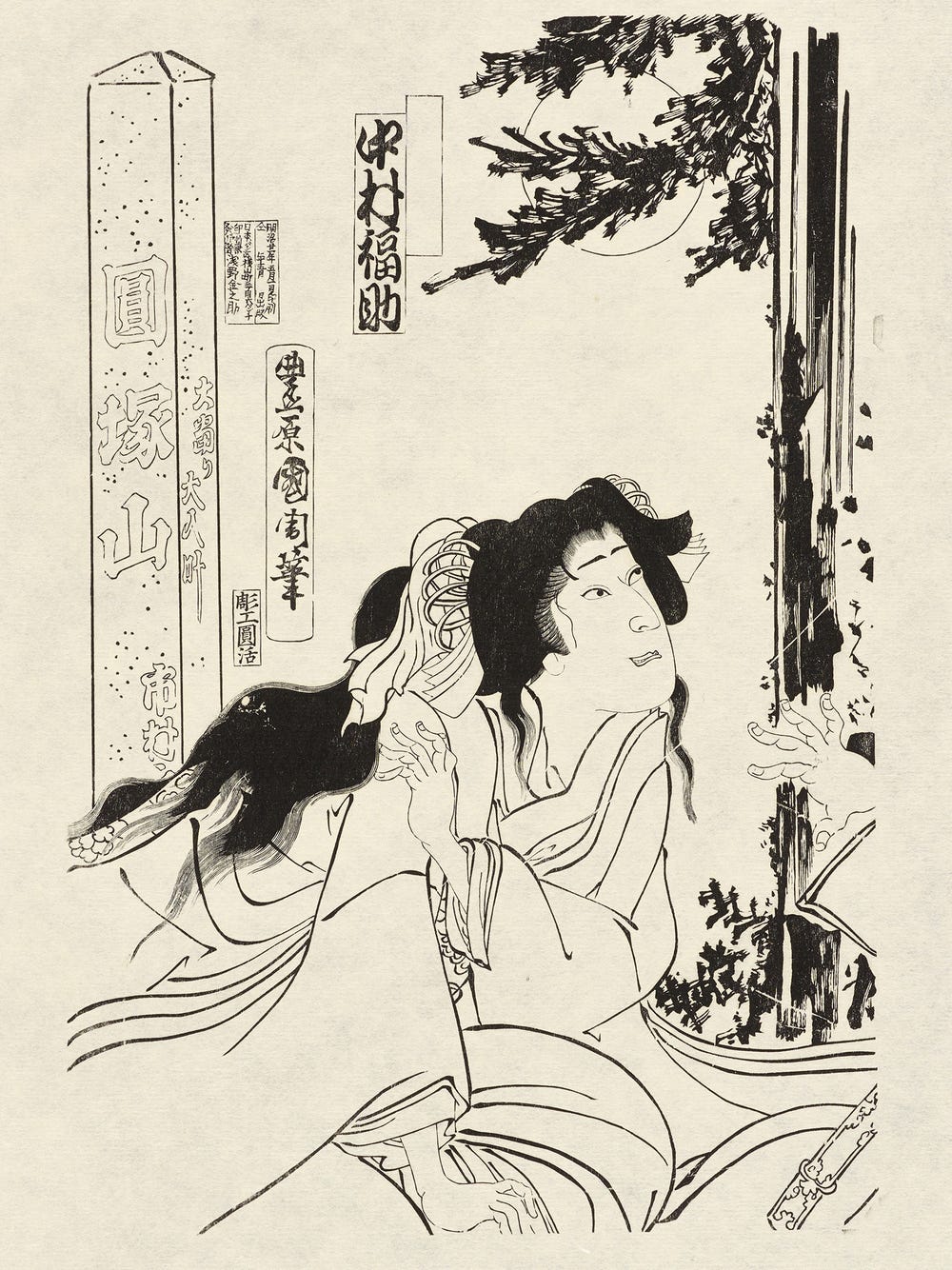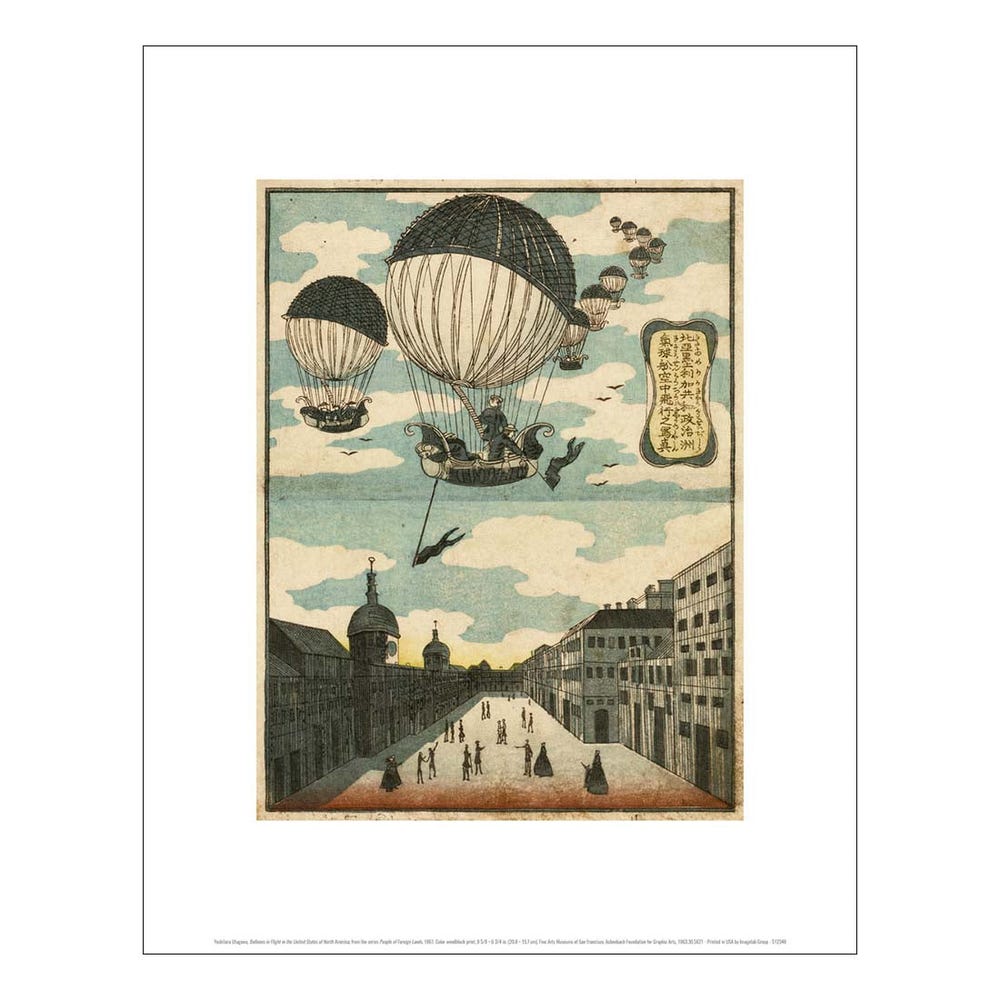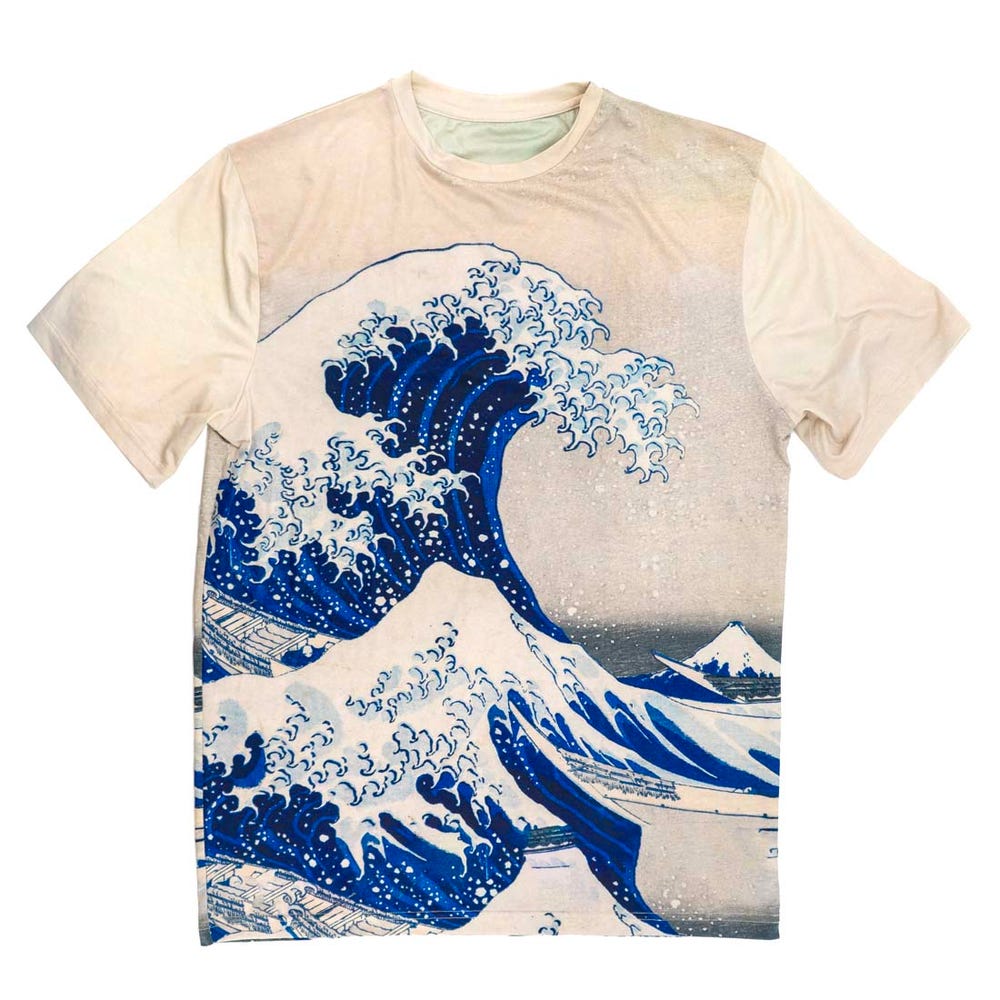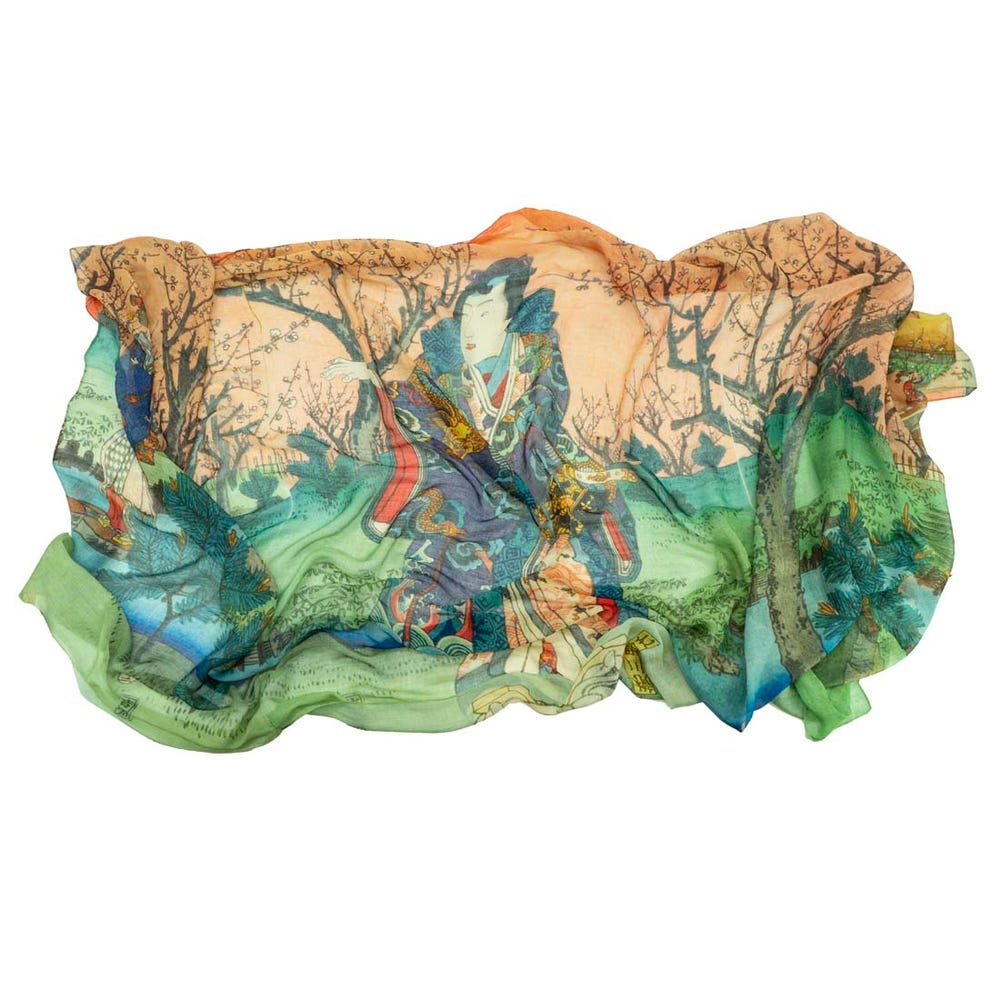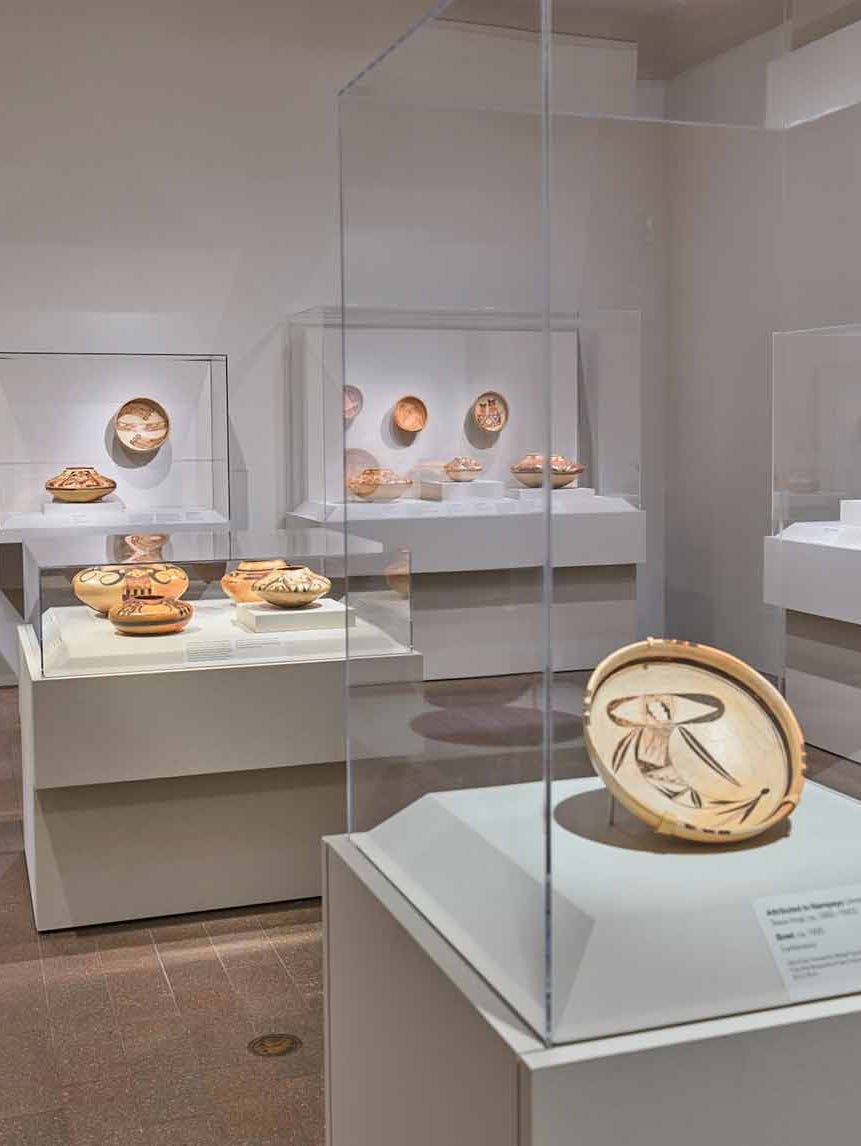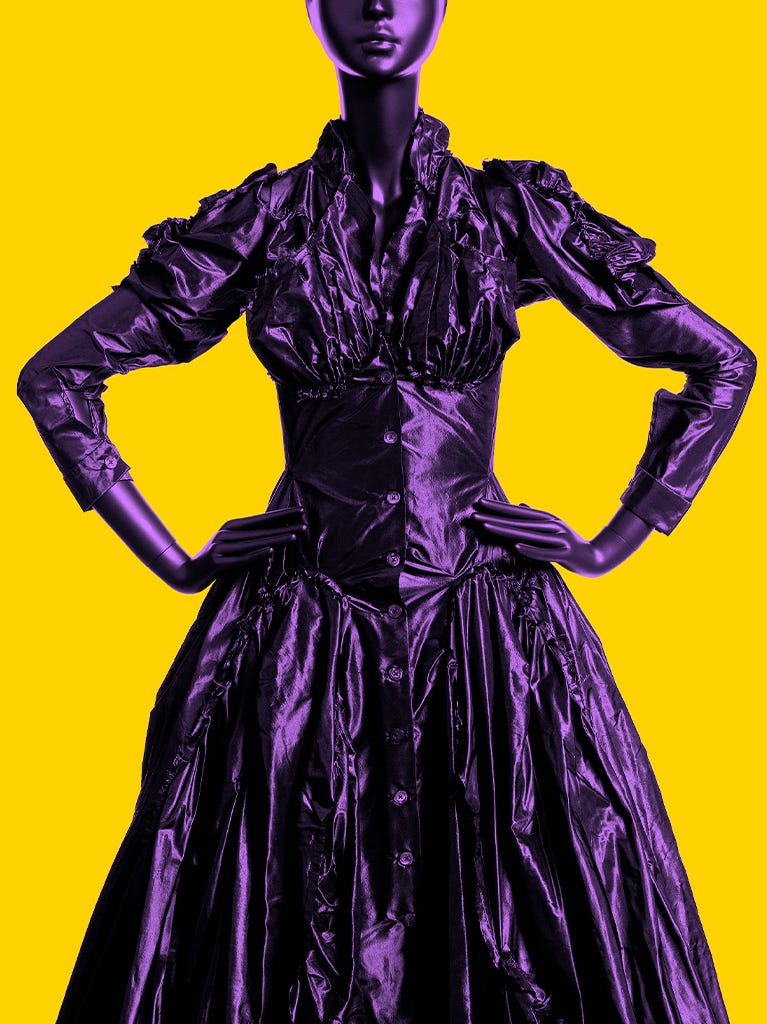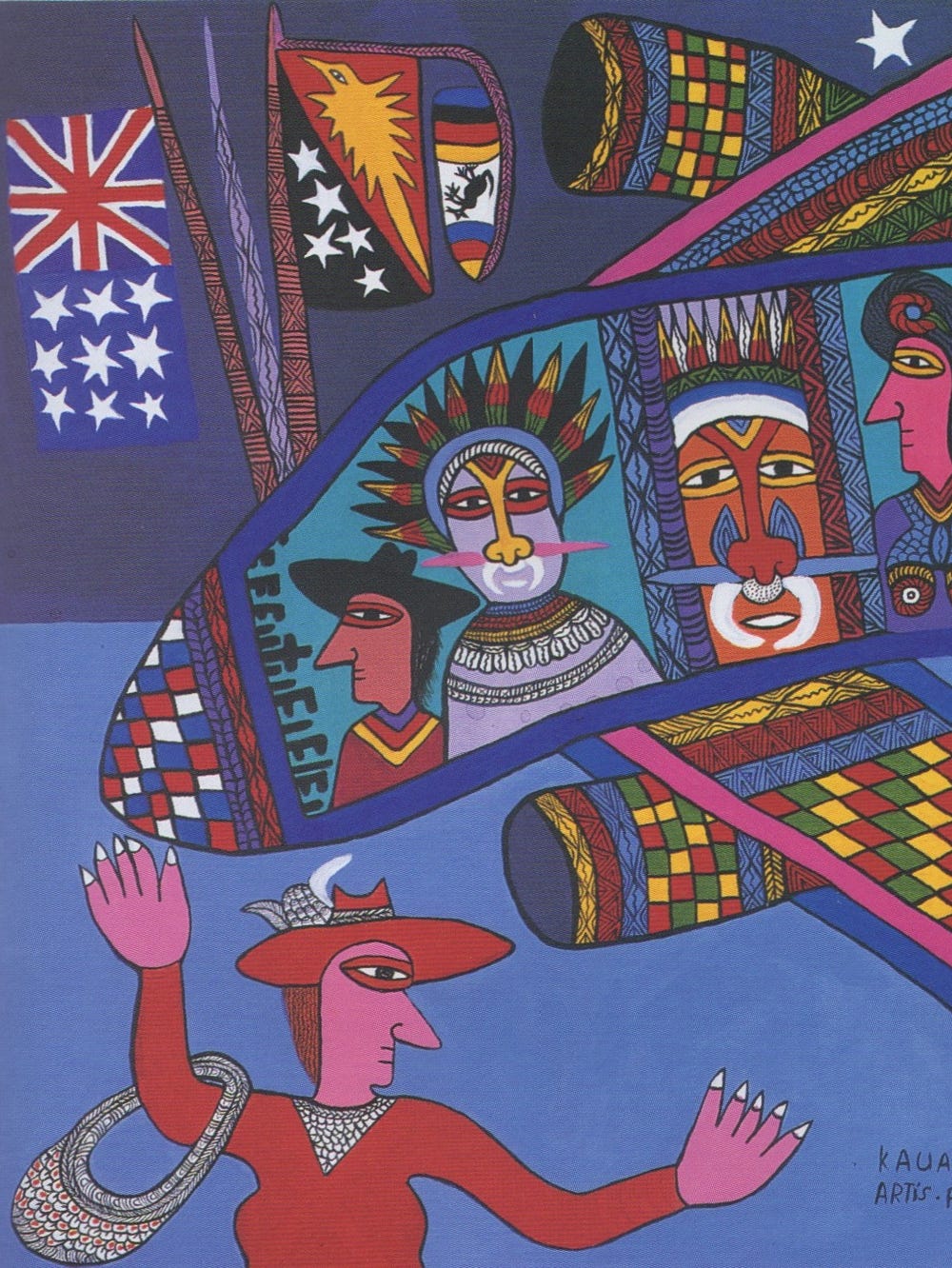Katsushika Hokusai (1760–1849), Under the Wave off Kanagawa (The Great Wave) (detail), from the series Thirty-Six Views of Mount Fuji, ca. 1830–1832. Color woodcut, 9 13⁄16 x 14 ½ in. (25 x 36.9 cm). Fine Arts Museums of San Francisco, Museum purchase, Achenbach Foundation for Graphic Arts Endowment Fund, 1969.32.6. Photograph by Randy Dodson
Japanese Prints in Transition: From the Floating World to the Modern World
In 1868 Japan’s shogun was overthrown, marking the end of feudal military rule and ushering in the Meiji era (1868–1912), a period of modernization and exchange with other nations. As Japan’s society shifted, so too did its print culture. The delicately colored ukiyo-e (floating world woodblock prints) of actors, courtesans, and scenic views that had flourished for over a century were replaced with brightly colored images of Western architecture, technology (trains, steam-powered ships, telegraph lines), Victorian fashions and customs, and modern military warfare. Featuring permanent collection works from the Achenbach Foundation for Graphic Arts that haven’t been displayed for a more than a decade, this two-part exhibition (the floating world and the modern world) highlights this stylistic transition and the work of one artist, Tsukioka Yoshitoshi, who successfully spanned them both. His distinctive, sometimes eccentric, images serve as a link between the two eras.
Exhibition preview
In the news
Events
Stories
Shop
More info
Sponsors
This exhibition is organized by the Fine Arts Museums of San Francisco.
Presenting Sponsor
John A. and Cynthia Fry Gunn
McEvoy Endowment
Lead Sponsor
San Francisco Auxiliary of the Fine Arts Museums
Major Support
Dagmar Dolby
Significant Support
Diana Dollar Knowles Fund
Carrick and Andy McLaughlin
W.L.S. Spencer Foundation
Generous Support
Trine Sorensen and Michael Jacobson
Thomas and Shelagh Rohlen Fund
Paul A. Violich
Additional support is provided by The Achenbach Graphic Arts Council, Alexandria and Dwight Ashdown, Sandra and Paul Bessières, Cathy and Howard Moreland, Lynn and Edward Poole, The Henri and Tomoye Takahashi Charitable Foundation, and Toshiba International Foundation.
